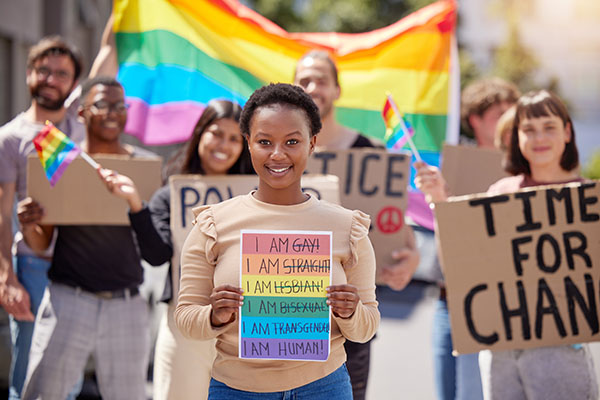Supreme Court rules affirmative action UNCONSTITUTIONAL, counts as RACIAL PREJUDICE
07/04/2023 / By Arsenio Toledo

The Supreme Court has ruled that race-based college admissions quotas – also known as affirmative action – are unconstitutional according to the Fourteenth Amendment.
The ruling stems from a case brought to the Supreme Court by a coalition of over 20,000 students, prospective university applicants and their parents in 2014 against Harvard University and the University of North Carolina (UNC), both of which use racial preferences during the admissions process.
This organization, known as Students for Fair Admissions, argued that Harvard and UNC violated Title VI of the Civil Rights Act by penalizing applicants from certain demographics, including Asian Americans, by engaging in racial balancing. The organization further argued that the universities overemphasize race and rejected race-neutral alternative admissions processes that could still ensure diversity in the admissions process.
With six justices concurring and three dissenting, the Supreme Court ruled that treating students differently according to their race is a violation of the equal protection clause of the Fourteenth Amendment. (Related: Asian-American student has near-perfect SAT score and a 4.65 GPA, gets ugly shock after applications to elite universities.)
Many universities, including Harvard and UNC, claim that consideration of race during admissions is one factor in creating a fully holistic assessment of applicants and is an indispensable tool for building a diverse student body.
SCOTUS: Universities should treat students according to their experiences, not race
The majority opinion of the decision was written by Chief Justice John Roberts, who is joined by Justices Samuel Alito, Amy Coney Barrett, Neil Gorsuch, Brett Kavanaugh and Clarence Thomas.
According to Roberts, student admissions processes should examine students based on their upbringing and experience, not race.
“A benefit to a student who overcame racial discrimination, for example, must be tied to that student’s courage and determination,” wrote Roberts. “In other words, the student must be treated based on his or her experiences as an individual – not on the basis of race.”
“Many universities have for too long done just the opposite,” he continued. “And in doing so, they have concluded, wrongly, that the touchstone of an individual’s identity is not challenges bested, skills built or lessons learned but the color of their skin. Our constitutional history does not tolerate that choice.”
Justices Ketanji Brown Jackson, Elena Kagan and Sonia Sotomayor dissented from the majority opinion.
“With let-them-eat-cake obliviousness, today the majority pulls the ripcord and announces ‘colorblindness for all’ by legal fiat. But deeming race irrelevant in law does not make it so in life,” Jackson wrote.
“Gulf-sized race-based gaps exist with respect to health, wealth and well-being of American citizens,” Jackson continued. “They were created in the distant past, but have indisputably been passed down to the present day through the generations.”
Sotomayor, in the written dissent of the three justices, claimed that ending affirmative action actually increases the likelihood of the U.S. being more racially unjust.
“The Court subverts the constitutional guarantee of equal protection by further entrenching racial inequality in education, the very foundation of our democratic government and pluralistic society,” she wrote.
Supporters of affirmative action claim this ruling will lead to fewer non-White students being admitted to campuses, especially to the nation’s most prestigious colleges and universities. Many corporations have even told the Supreme Court that ending affirmative action would undermine their ability to recruit a diverse, highly educated workforce.
Meanwhile, critics of the policy, including the thousands of students and college applicants who brought this case to the Supreme Court, argue that race-blind admissions will restore equity for all Americans and that the so-called consequences of the ruling are exaggerated, especially since the court leaves open the possibility of taking race into consideration during admissions.
Nothing in the court’s majority opinion, as Roberts put it, “should be construed as prohibiting universities from considering an applicant’s discussion of how race affected his or her life.” All it does is prevent boosting the diversity of student bodies from being used as a rationale for taking a student’s race into account during admissions processes.
Furthermore, Roberts specifically kept affirmative action in place for the nation’s military academies because of their “distinct interests,” which have led to the creation of a very diverse officer corps that the Supreme Court believes helps truly represent the United States.
The battle over affirmative action is unlikely to end here, however, as future efforts by universities to attract a diverse student body in their new admissions processes will likely lead to more legal battles over race and college admissions for decades to come.
Learn more about racism in America’s schools at EducationSystem.news.
Watch this episode of “Brighteon Broadcast News” as Health Ranger Mike Adams discusses the Supreme Court’s decision to end affirmative action in higher education – and the angry liberal reaction to this ruling.
This video is from the Health Ranger Report channel on Brighteon.com.
More related stories:
Woke VA middle school bars Whites, Asians from joining college prep program.
Leftist “educators” eliminating honors courses to dumb down students in the name of “equity.”
Sources include:
Submit a correction >>
Tagged Under:
affirmative action, campus insanity, Constitution, education, education system, Fourteenth Amendment, identity politics, John Roberts, political correctness, prejudice, public education, race relations, race war, racism, scotus, Supreme Court, universities
This article may contain statements that reflect the opinion of the author
RECENT NEWS & ARTICLES
COPYRIGHT © 2018 SOCIALJUSTICE.NEWS
All content posted on this site is protected under Free Speech. SocialJustice.news is not responsible for content written by contributing authors. The information on this site is provided for educational and entertainment purposes only. It is not intended as a substitute for professional advice of any kind. SocialJustice.news assumes no responsibility for the use or misuse of this material. All trademarks, registered trademarks and service marks mentioned on this site are the property of their respective owners.




















